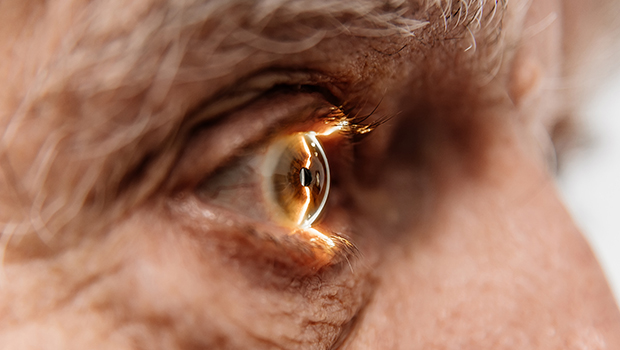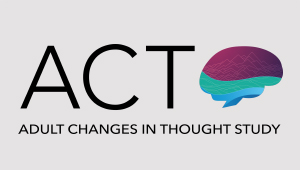Alzheimer’s vision study improved with home testing

The research builds on the ongoing Adult Changes in Thought (ACT) Study, started in 1994
There is conflicting research on the strength of relationships between retinal biomarkers and Alzheimer’s disease and related types of dementia. Limited sample sizes, study designs, and protocol differences have led to mixed results in exploring whether features on the back of the eye are associated with development of dementia.
A new paper suggests that, by adding a home testing element to their research, Cecilia Lee, MD, MS, and her colleagues from the University of Washington (UW) and Kaiser Permanente Washington Health Research Institute (KPWHRI) have ironed out a difficult wrinkle.
The group believes their study results will move them closer to a reliable way to detect Alzheimer’s disease early. Their paper, published in the Journal of Alzheimer’s Disease, details progress on the project.
“We know that just looking at the diagnosis of eye diseases can tell us that somebody's at increased risk of Alzheimer's disease,” said Lee, a professor of ophthalmology at the UW School of Medicine and affiliate researcher at KPWHRI. “Now we can do so much better with characterizing the eye, particularly the retina — the neural tissue of the eyeball — because we have all these noninvasive techniques. We can measure visual function and characterize microscopic features of the retina.”
Lee’s Eye ACT study recruited 330 participants from within the ongoing Adult Changes in Thought (ACT) Study whose retinas are imaged every 2 years. Since Alzheimer’s is so difficult and expensive to diagnose, the hope is that by tracking retinal changes over time, researchers can use artificial intelligence to correlate those changes with the development of dementia and understand at what point these retinal changes occur before or while cognition becomes impaired.
One hitch for previous studies has been the difficulty of testing outside of clinic settings. This has meant that potential research participants who could not get to a clinic were left out of the data. These people are often older and have more complex health conditions. Not including them as participants was a potential flaw in study design. By including home testing, Eye ACT aims to address research gaps and potential sources of bias.
The Eye ACT study was funded in 2019 with a $17.2 million grant from the National Institute on Aging. The grant came after Lee and colleagues published a 2018 study that found a significant link between dementia and age-related macular degeneration, diabetic retinopathy, and glaucoma.
The team also found that cataract surgery was associated with a 30% lower risk of dementia in a subsequent study. Lee hopes the NIA will extend the grant another 5 years so they can better understand these results and discover more in this unique population.
“If you ask me about a result, I promise you that I can find a paper that reports a conflicting outcome,” Lee said. “There are a lot of controversies about, say, what part of the retina is associated with Alzheimer's? Is it really Alzheimer's? Or is it any neurodegenerative conditions like Parkinson’s disease, vascular dementia, frontotemporal dementia, and so on? Is it really age-related? Where do you need to look?”
George Perry, PhD, the editor-in-chief of the Journal of Alzheimer’s Disease, agrees and has identified Lee’s work as of particular interest “as the eye changes have been somewhat controversial and this work clarifies.”
Lee and team have been using data gathered from participants in the ACT Study, which was established in 1994 as a collaboration between KPWHRI and the UW School of Medicine. ACT is a living laboratory of aging and the brain that includes health information about Kaiser Permanente Washington participants 65 and over. ACT has supported continuous regular collection of extensive data for research on brain aging and Alzheimer’s disease.
“ACT is an incredibly valuable research resource for scientists studying Alzheimer’s disease, not just because of the wealth of data that we collect, but also because we have always included participants who prefer home-based visits,” said Linda McEvoy, PhD, senior investigator at KPWHRI and a principal investigator on the ACT Study. “We don’t restrict participation to those who are able and willing to come to the research clinic. Because of this, results from studies like Eye ACT are more likely to generalize to the wider population.”
The ACT information is especially valuable, Lee said, because it is community based, with data not just from participants referred by clinics. All patients are likely getting the same kind and level of comprehensive medical care as they age.
The study’s investigative team includes expertise in Alzheimer’s disease and related dementia, neuropsychology, neuroimaging, ophthalmic imaging, big data, and artificial intelligence. Lee believes the work they’ve done to date has laid the groundwork for moving past the so-far muddled results in this area of study.
“We are already seeing significant results just from looking at the first 330, and then now those people are coming back to follow up,” Lee said. “We are so grateful to our Eye ACT and ACT participants. The study will continue to generate more results, and this is what we need.”
This research was funded by the National Institute on Aging (R01AG060942, U19AG066567, U01AG006781). Additional funding included NIH grant OT2OD032644, the Latham Vision Research Innovation Award, the Klorfine Family Endowed Chair, the Karalis Johnson Retina Center, and an unrestricted grant from Research to Prevent Blindness. Lee is the Klorfine professor of ophthalmology.
This has been adapted from a news story written by Chris Talbott for the University of Washington School of Medicine.
Learn About the ACT Study

Understanding brain aging
For over 30 years, the Adult Changes in Thought (ACT) Study has been advancing our understanding of cognition, aging, and better ways to delay and prevent Alzheimer’s disease and related dementias.
2024 ACT Symposium

Researchers connect for ACT Symposium, advancing science on dementia, aging
The long-running ACT Study is now in its 30th year.
Research

Can preventing hearing loss reduce dementia risk?
New research from Linda McEvoy, PhD, helps explain how hearing loss affects the brain.
New findings

Using long-term data to understand a vulnerable population
Studies offer insights into the lives of older adults with dementia who lack family.


